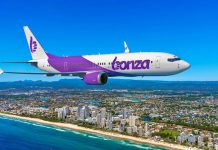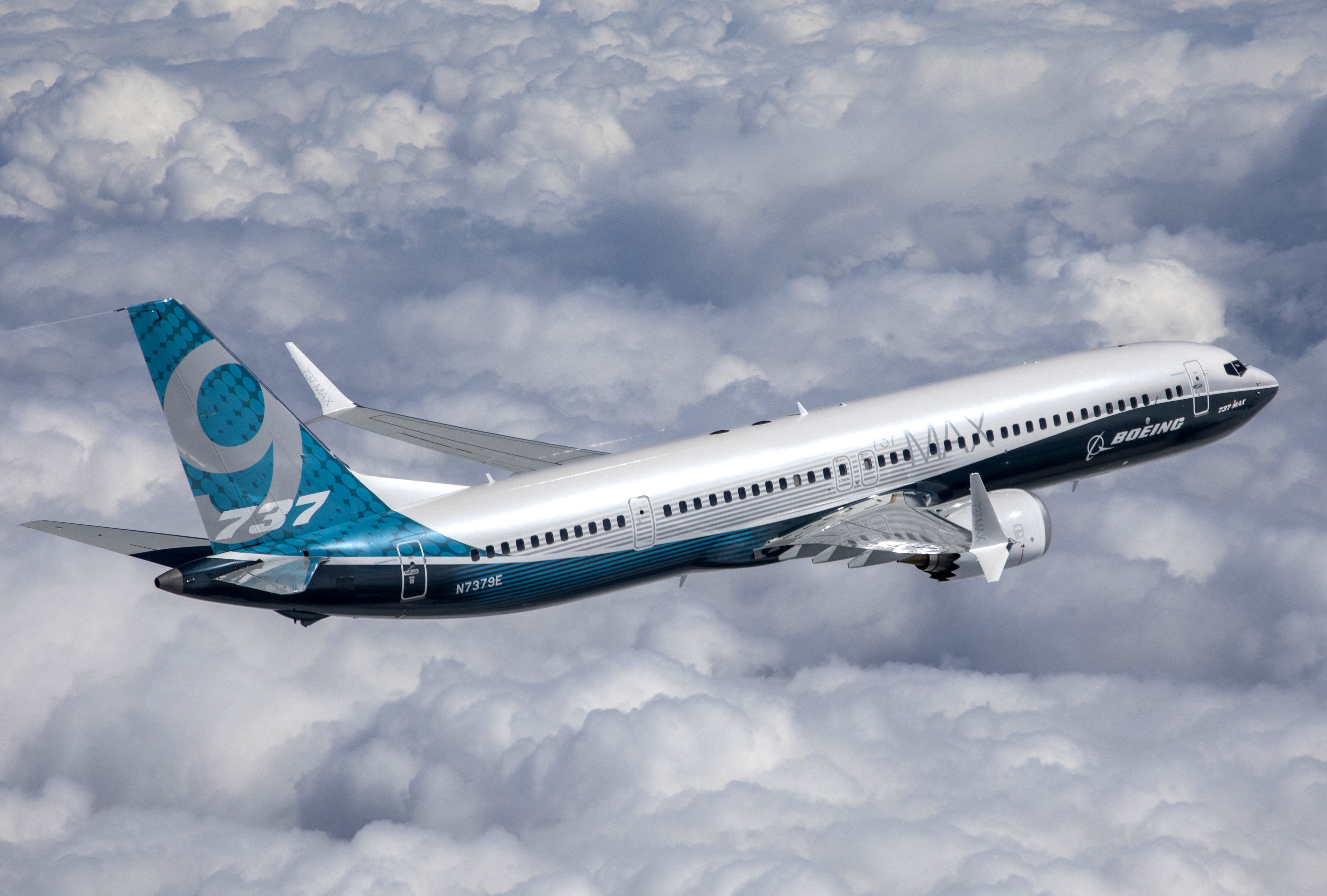In commercial aviation there was almost no cosier relationship than that of Swissair and McDonnell Douglas which spanned decades from the 1930s to the 1990s so when the airline turned its back on the latest -and longest- version of the DC-9/MD80 family, the MD90, it prompted Flight International to headline the news as a “stretch too far”.
One of the other great enduring aviation relationships is that of United Airlines with both McDonnell Douglas and Boeing. United launched the DC-6, was the second customer for the DC-8 and DC-10 and was the launch customer for the 727, 737 and 777.
With the news, as January closed, that United’s no-nonsense CEO Scott Kirby flew to Toulouse to discuss more Airbus A321s as a replacement for the 388 MAX 10s the airline has on order it was a sure sign that the Alaska Airlines’ MAX 9 door incident was “an incident too far.”
Kirby had already flagged as much when he said of the MAX 9’s partial grounding; “I think this is the straw that broke the camel’s back for us. We’re going to at least build a plan that doesn’t have the Max 10 in it.”
Kirby added on a positive note, however, “We need Boeing to succeed. But they’ve been having these consistent manufacturing challenges. They need to take action here.”
Those production incidents have been multiple and impacted both the 737 and 787, for which United is also the biggest customer. The Boeing woes are incredibly frustrating for Kirby as he tries to rebuild United Airlines’ fleet and tarnished product and service reputation.
United has had its 80-strong MAX 9 fleet grounded impacting up to 8000 flights a month causing massive losses not to mention huge disruptions to its passengers and staff.
According to Kirby (below), it will now be five years before Boeing can deliver the MAX 10 which has sent the airline rushing to Airbus for help and it may not be the only airline doing so.

However, Airbus’s backlog for narrow bodies at around 7000 is significantly higher than that of Boeing’s (4700) so its ability to “manufacture” a couple of hundred delivery slots when United wants them is almost impossible in an extremely tight market.
United is the second largest user of the 737, after Southwest with 40 737-700s, 141 -800s, 12 -900s and 136 – 900ERs. Its MAX family commitments are 80 -MAX 8s, 79 -MAX 9s and 388 MAX 10s on order.
United already has a significant fleet of Airbus jets with 172 A319/A320 in its fleet plus 3 A321neos with another 127 A321neos on order along with 50 A321XLRs.
United like Alaska Airlines is well into the inspection process of getting its MAX 9s back into service and Kirby says he has “a lot of confidence in the safety of these airplanes, particularly since we know what happened with this Max 9.”
The inactivated door plug on the MAX-9 is not the issue as it’s identical to that on the legacy 737-900ER which has clocked up 10 million hours without incident and Airbus’s A321 also has door plugs as well what is at issue is Boeing’s quality oversight.
Because of this oversight along with other breaches around production, Boeing now faces a multitude of issues that are almost as great as those of the MAX crashes, with FAA audits, an unprecedented cap on planned production ramp-ups of the MAX, delays in certification of two MAX models and the flagship 777-9 and a wider longer-term loss of confidence in the name Boeing.
The new FAA MAX production audits will be far longer and a planned rate hike from 38 aircraft a month to 42 planned for January went on ice and is not expected to take place till the 2nd quarter of this calendar year.
New York analyst Bernstein estimates that instead of delivering 587, 737 MAX aircraft this year Boeing will deliver 540 and will be 30 aircraft less than the 670 planned for 2025. The certification of the other two models of the MAX is now is serious jeopardy of significant delays with Bernstein suggesting a slippage to 2025.
The loss of confidence in Boeing is a deeper and wider issue.
Bernstein in its report “Boeing: Working for the clampdown – What are we going to do now?” says it has “heard worries that customers would move away from Boeing due to safety concerns” and it adds that “Boeing clearly needs to move its quality control to a higher standard. That is what Boeing is focused on based on CEO Calhoun’s statements in Washington and announced efforts to address quality concerns.”
But it adds in a warning that “while this is all good, the proof will be in the results, as we heard about a renewed quality focus at Boeing after the 2018-19 MAX accidents and quality issues have persisted.”
Of course, Airbus has had its issues as well with the durability of the GTF engine causing airlines significant grief. Berstein notes that “Ryanair CEO O’Leary was talking about how fortunate they were to have a 737MAX fleet rather than a GTF-powered A320 fleet.”
Boeing Commercial Airplanes CEO Stan Deal is now faced with a mammoth task to restore airline and passenger confidence in Boeing. In a staff memo told workers that “our long-term focus is on improving our quality so that we can regain the confidence of our customers, our regulator and the flying public. Frankly, we have disappointed and let them down. We are deeply sorry for the significant disruption and frustration for our customers, some of whom have been publicly and unfairly criticized. We have heard from our regulator, which has announced it won’t allow 737 MAX production increases until they are satisfied, we have improved our quality control. We own these issues and will make them right.”
Deal (below) added that “over the last century, the people of Boeing have faced and overcome significant challenges. This is one of those times. We have to be better. We have to deliver perfect airplanes each and every time.”

Boeing has rolled out a series of changes which include:
- Instituted additional controls at Boeing and Spirit AeroSystems to eliminate quality escapes for the mid-exit door plug and similar structures and assemblies.
- Inspected and approved the first 737 fuselages from Spirit for shipment to Boeing since the accident.
- Issued two bulletins to suppliers to strengthen the focus on conformance and reducing the risks of quality escapes.
- Hosted representatives from several 737 operators to directly review our production and quality procedures.
- Appointed a recognized safety and quality leader, Admiral Kirkland Donald, to complete an independent assessment of our Quality Management System.
Then in an unprecedented move, Boeing paused 737 production and delivery activities for a day with more than 10,000 workers across Renton, Seattle and Moses Lake stopping to refocus on safety and discuss how the company can improve its practices.
“This is a quality stand down at a scale we have not done before and I greatly appreciate our people for being open and honest,” Deal said in a statement.
He added, “as I joined the discussions in the 737 factory, I heard frank feedback from teammates who brought forward ideas to clarify work instructions, strengthen training programs and improve other practices.”
Deal said that “Elizabeth Lund (SVP & GM of Airplane Programs for BCA) and the Airplane Programs team are reviewing the hundreds of opportunities and prioritizing improvements that should be implemented first. We will hold these quality stand-downs at all Commercial Airplanes programs and sites over the next few weeks. Your voice is critical. Please continue to raise concerns and share ideas through your leadership, or using our Speak Up portal. I look forward to sharing another update on our actions.”
But will this be enough? Are the problems wider and deeper? Boeing has had a difficult and at times very strained relationship with its machinists for decades and this year the current contract is due to expire in September in what is shaping up to be an extremely difficult set of negotiations.
However, maybe the slip in quality of workmanship lies elsewhere.
The latest “Gallup State of the Global Workplace 2023 Report” reveals that the US worker has the highest regional percentage of daily stress and the highest regional percentage of female employees who experience high daily stress.
Specifically, the numbers aren’t good with 52% saying they are not engaged and 18% saying they are angry and only 31% saying they are engaged, while 71% said it was a good time to find another job. Those numbers compare to a global 44% saying they are not engaged. And compared with engagement with global best practice companies.
It seems inconceivable that the company that gave us the 707 and 747, helped put a man on the moon, but a raft of satellites, built the rockets that put them in orbit, built most of the free world’s fighter jets and transport aircraft and the lead integrator of the International Space Station is now the butt of a tsunami of jokes and ridicule across the internet can find itself the butt of a tsunami of jokes and ridicule not just on social streams but in mainstream media over its seeming inability to perform the simplest of the task – tighten up nuts.
The industry needs Boeing to do better – much better – or it will become a marginal player just as McDonnell Douglas did in the 1980s and 90s.

























